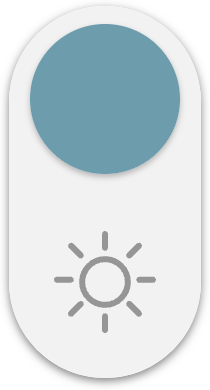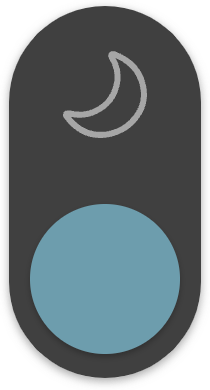Have you ever seen foreigners explaining concepts like Yin-Yang and the Five Elements or diagnosing each other using traditional Chinese techniques? This is a common sight at ABZ MITTE, a Chinese medicine school located in Offenbach near Frankfurt. Over the past 30 years, ABZ MITTE has become the largest and most renowned Chinese medicine training center in the Rhine-Main region of central Germany, showcasing the richness of Chinese culture in a foreign land.

Planting the Seed of Chinese Medicine in Germany
ABZ MITTE offers a three-year Chinese medicine training program. According to its principal, Silke Burkart, the school has 16 instructors teaching foundational Chinese medicine and acupuncture and additional lecturers delivering advanced and specialized courses. Students from various professional backgrounds take over 1,000 hours of lessons. After completing the program, those with medical licenses or alternative medicine qualifications in Germany can integrate Chinese medicine into their practices or open their own clinics, focusing on treatments like acupuncture and tuina (Chinese therapeutic massage).

The school's logo resembles the Chinese character for "earth" (土) but with an added stroke. While it might look like a typo to Chinese speakers, Silke offers a deeper interpretation: "Earth nourishes all things, and the extra stroke represents a seed that takes root and grows upward."
Silke also explains that in the Five Elements theory, the earth represents the center, and "China" itself is historically referred to as the "center of the world." The choice of this character for the school's logo aligns with the school's mission to teach and promote Chinese traditional culture.

The Allure of Chinese Medicine: The Five Elements and Meridians
Sigrid Klain, one of the co-founders of ABZ MITTE, was among the first to introduce Five-Element Acupuncture to Germany. Unlike traditional meridian-based acupuncture, Five-Element Acupuncture is rooted in the Chinese Five Elements theory, focusing on balancing the Five Elements within the body and holistically addressing emotional, mental, and physical health.

In 1993, Sigrid and three like-minded partners founded ABZ MITTE to promote Chinese medicine better. "I knew about this school before I came because it's so well-known in Germany," said Cheng Yan, a Chinese-German student at the school. She was drawn to the school's rigorous curriculum and excellent faculty. Cheng emphasized that the practical classes, including pulse-taking, meridian diagnosis, and patient interaction, were especially appealing. "These aspects are what fascinated me the most," she said.
"The atmosphere at ABZ MITTE is incredibly welcoming," Principal Silke noted. The students are deeply passionate about learning Chinese medicine, and even the school's Chinese language classes are highly popular, with classrooms packed to capacity. Many students have reported improved results in their own clinics after completing the courses.

Challenges in Promoting Chinese Medicine Abroad
Promoting Chinese medicine in Germany — a nation deeply rooted in traditional Western practices — is not without its challenges. Cultural differences often lead to skepticism toward natural therapies. Acupuncture instructor Constantin Kramer pointed out that the lack of equivalent terminology for Chinese medicine concepts in Western languages hinders its widespread understanding.

"For example, when we talk about 'qi' in Chinese medicine, we use the word 'energy' in German. But in Western languages, 'energy' is often seen as something abstract," Constantin explained. He noted that Chinese "qi" refers to a fundamental substance in the body that manifests physically. For instance, when someone gets angry, their face flushes and feels hot — a manifestation of rising liver qi. However, Westerners often associate "energy" with mystical or vague ideas, making it difficult for them to grasp the true meaning of "qi."
Nadine Zäch, a Swiss instructor specializing in Shang Han Lun (Treatise on Cold Damage), expressed hope that more people would approach Chinese medicine with an open mind: "Shang Han Lun has existed for over 2,000 years, surviving in a country marked by war and turmoil. If it could last 2,000 years, why not another 2,000?"
Passing Down Chinese Medicine: Preserving a Cultural Heritage
Despite the challenges, Cheng Yan remains optimistic about the future of Chinese medicine in Germany. "Germans are a conservative people, but once they accept something, they become deeply drawn to it," she said. On her way to the school for an interview, Cheng experienced a small but encouraging moment of Chinese medicine' s growing appeal: the taxi driver noticed the therapy-related logo on her bag and asked about her work. Upon learning she practiced acupuncture, he immediately asked for her business card. "This is a good sign," Cheng said. "Westerners are starting to trust natural therapies more."

Principal Silke believes that Chinese medicine is a form of world cultural heritage. She praises the wisdom of ancient Chinese practitioners who, without the aid of modern tools like MRI scanners or X-ray machines, developed diagnostic techniques such as observation, listening, smelling, and palpation to understand the human body. "We must thank our ancestors and predecessors in China for their intelligence and for recording all of this knowledge, preserving it as both science and art for thousands of years."

"When we founded ABZ MITTE in 1993, we barely advertised, yet people flocked to us, filling our classrooms," Sigrid said. Today, all the original founders of ABZ MITTE remain actively involved in the school, maintaining their passion for spreading knowledge of Chinese medicine. They are committed to helping students improve their treatment skills. "I know that Chinese medicine is my cure," Sigrid said. "I will spend the rest of my life learning it. Chinese medicine is so ancient, so wise, and so fascinating."
Related News:




















Comment